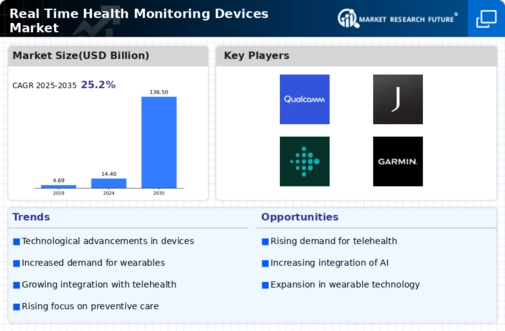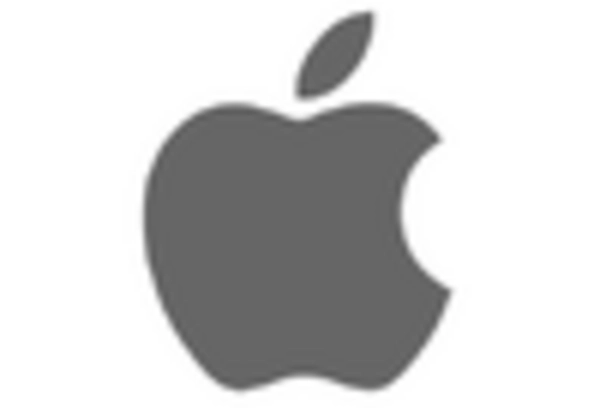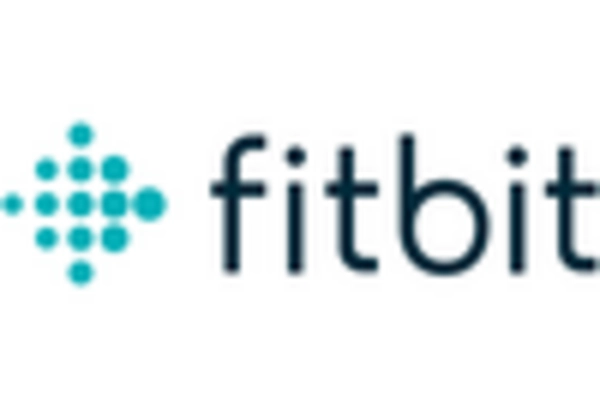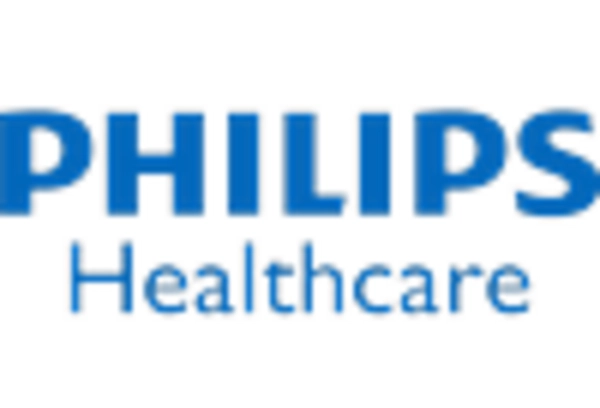Market Analysis
In-depth Analysis of Real Time Health Monitoring Devices Market Industry Landscape
The use of smartphones and wearable devices in healthcare is on the rise, bringing about advancements in real-time health monitoring. This market is heavily reliant on Information Communications Technologies (ICT) networks, which complement medical and health monitoring services. Mobile applications play a crucial role in this, allowing consumers to store their medical records and enhance coordination among healthcare providers. Devices like the Apple Watch, equipped with health and fitness apps, exemplify the benefits of real-time health monitoring by providing features like heart rate measurement.
These devices create a platform for quick communication between healthcare providers and patients through messages, calls, or Internet-based video links. Additionally, there is potential for collaboration with mobile money (m-money) services, facilitating various purposes such as medical savings accounts, insurance policies, and government or donor benefits. For instance, a patient can use m-money to pay for a prescription received through a mobile application.
Devices like mobile phones, laptops, and Personal Digital Assistants (PDAs) offer a wide range of features suitable for basic real-time health monitoring services as they can access the internet. Collaborations between entities like Teardown.com and Wearable Technologies analyze the growing market for wearable and wellness medical devices. An example is the FDA-approved portable bio-data logger by Zephyr, designed for physiological monitoring of individuals working in high-risk environments, monitoring posture, activity, and ECG.
Cost-effectiveness and convenience for patients are key advantages of integrating IT and telemedicine into healthcare. This integration has the potential to reshape the medical care sector without compromising on quality and at a reduced cost. Particularly beneficial for patients with chronic diseases like diabetes, real-time health monitoring devices and applications are accessible to people of all ages, classes, and countries.
The cost-effectiveness of these solutions is evident in the savings on regular clinic visits, consultation fees, and transportation costs. Real-time health monitoring devices provide convenience to patients, allowing them to access benefits and services from the comfort of their homes. In a Malawi study, the use of a health information system saved 2,048 hours and USD 2,750 in transportation costs for 75 workers. This system also doubled the capacity of tuberculosis treatment programs. In Bangladesh, nationwide SMS health campaigns are conducted at no cost, thanks to the telecom regulatory framework mandating operators to provide the service free of charge.
Real-time health monitoring devices also play a crucial role in government feedback mechanisms. They assist governments in gathering feedback from patients regarding government services, healthcare workers, and doctors. Additionally, these devices help patients understand their diagnosis and treatment methods more easily, allowing them to check their medical records with greater convenience. Overall, the increasing use of smartphones and wearable devices in healthcare is transforming the sector by making it more efficient, cost-effective, and accessible to a wider population.

















Leave a Comment